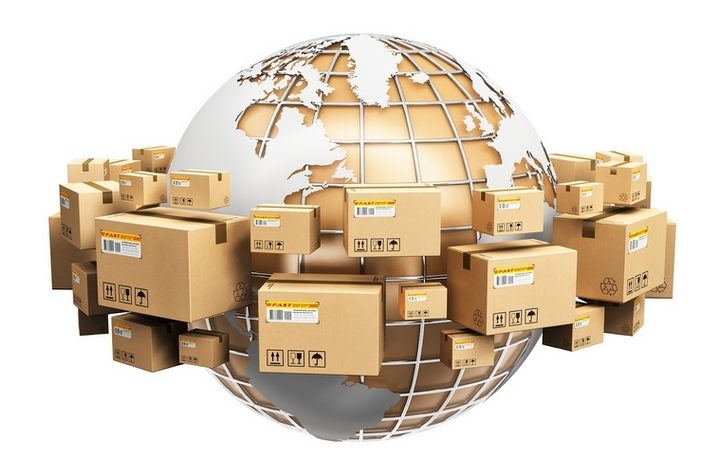eCommerce businesses across the globe utilize international shipping daily to get products to customers on all continents. It you’re unfamiliar with how to ship internationally, it can be intimidating to get started. There are many areas where mistakes can be made in creating international shipping strategies.
To help you along, we assembled a quick list of a few considerations to make. Here is a 12-step guide on how to ship internationally:
1. Costs and effort

When you start to ship internationally, it’s a whole different ballgame compared to moving product domestically. For each country or market, there are unique customs, tariffs, duties, and taxes to pay. There’s a lot to learn and coordinate. Ensure you’re setting aside the time and resources to plan. Pitfalls are made here every day, especially by the inexperienced. Keep the costs and risks to a minimum by doing your research into where you plan on sending product.
2. Is it really cost effective?

For some businesses, after you draft an international shipping strategy, you may find it’s not as cost-efficient as you expected. Are there opportunities to reduce your costs in some way? You also want to come up with a draft on what to advise the customer on cost and time frame for delivery. Set expectations you know you can not only meet but exceed, to avoid all potential frustrations. Keep in mind you are working with different time zones and languages.
3. Shipping options

A mistake a lot of small businesses and eCommerce companies make is that they offer only one shipping method. By offering different shipping options, you increase the likelihood of closing the sale and making shipping adaptable to the customer. Also, if you have a ‘free shipping’ international coupons, it’s important to figure out how to do this cost-effectively across any and all shipping options. Try working in tandem with an international logistics company to work out your options.
4. Packaging

Appearance aside, your packaging needs to be able to protect product as it’s shipped internationally. The most successful companies who ship overseas do so with strong, beautiful packaging that lasts. You don’t want broken items arriving to your customer’s front door.
5. Choose a reliable shipping partner

After all that’s set, it’s time to choose a reliable shipping partner. You want a brand that has the resources and customer service to deal with any issues promptly and efficiently. Be selective. Consider the shipping methods and partners others are using.
6. Basic information you need to ship internationally

The basic information you’ll need for international shipping includes phone numbers, emails, accurate contact information. The contents of a shipment need to be thoroughly described, including what it is, its materials, and country of origin. This needs to be documented to avoid delivery issues or custom delays. Lastly, the value of your merchandise being shipped or per-unit should be clearly stated and this information should be in the currency of the purchase.
7. Check shipping regulations

After you have your basic information written out, search the country or territory you’re shipping to. Know what restrictions, licensing, or special provisions there may be on an import of goods. There are lists online of globally restricted and prohibited items to watch out for.
8. Enter shipment details

When you come to enter your international shipping info, you may be able to enter this online. Include all the aforementioned details, prior to selecting what shipping service you need and billing options. There are companies like UPS, for example, which make this step very easy. Customers can sign in online and enter all of this information from their keyboards.
9. Customs information

A shipping label should be issued with the appropriate customs information as well as a commercial invoice and other customs-related forms. To expedite customs clearance, you can include a tariff code describing the product in accordance with the standard guide used worldwide to identify goods with known as the ‘Harmonized System’.
10. Know who pays for what

You and your customer shouldn’t be caught off-guard with a cost. Anticipate and ensure you know who is supposed to cover the import duties and taxes. Depending on the industry or company, these costs can be assigned to the shipper, receiver, a connected third party, or is sometimes split between them.
11. Priority vs. flat rate shipping

Some brands may choose to use priority shipping internationally or shipping for a flat rate. UPS, FedEx, and UPS are three key sources of international shipping rates to consult with. Without a business account, costs can add up rather quickly no matter whether it’s priority or flat rate, no matter the shipping company.
12. What is the cheapest way to ship internationally?

There are a handful of cheap international shipping methods although for any which business, they may wish to consult with an expert who can direct you to the most cost-efficient way. Researching international rates can be overwhelming and hard to compare as they are based on destination, weight, and delivery time frame. There are a lot of variables which can change how much one will have to pay.




